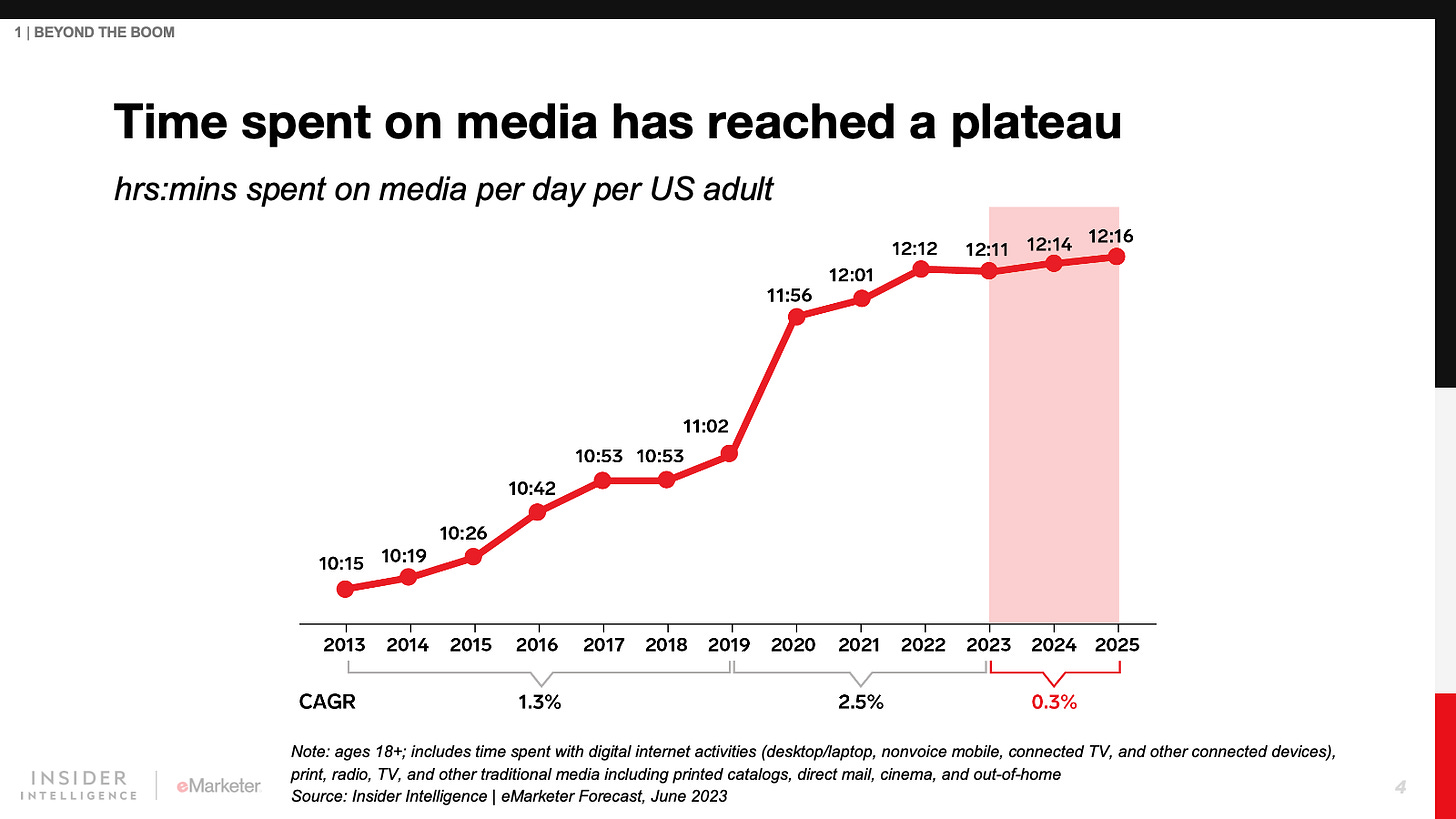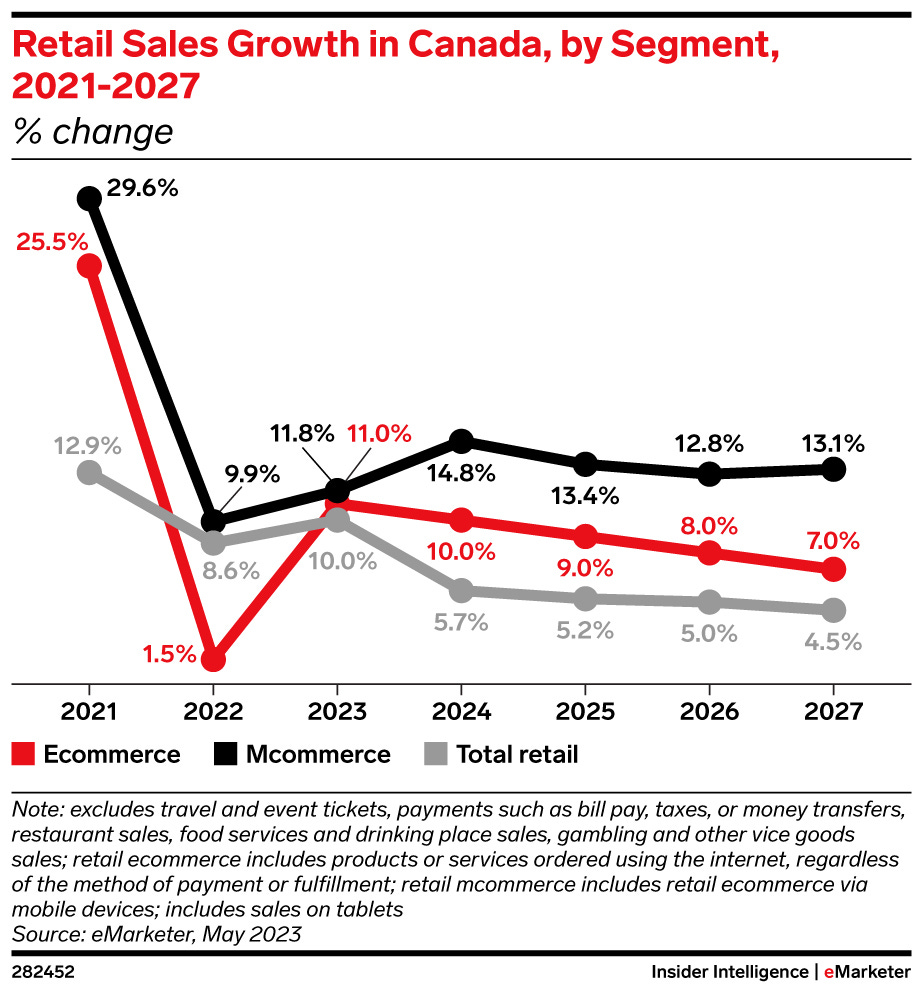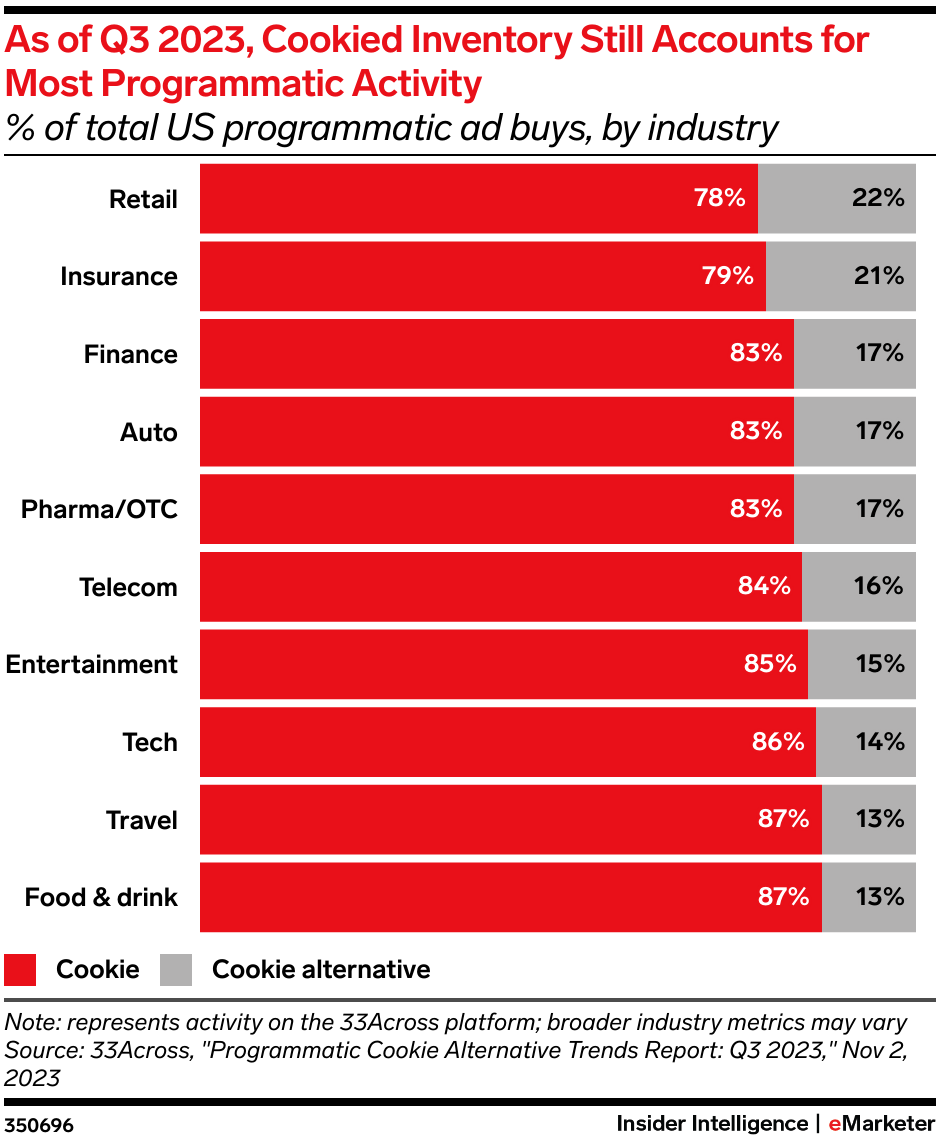6 charts to explain everything about engagement in 2024
How will you master 2024’s chaos? Chart your course through adventure and the year’s biggest trends in digital disruption.

Today's Pound & Grain newsletter by Thomas Morton and Tom Stevens is about 1,000 words. Or as they tell us, “a fun 5-minute read to enjoy over that morning tea while thinking about User Journeys and how is it possibly nearly April!?”
Elections, artificial intelligence, TikTok bans? 2024 is shaping up to be pretty monumental. Amidst this whirlwind of events, it’s all too easy to overlook the subtler, more gradual events that slowly creep up on us. Beneath our feet, the tectonic plates of digital are constantly moving.
But fear not, your trusty friends at Pound & Grain are here to help you make sense of the noise and see the bigger picture. We’ve unearthed six insightful charts (that you probably haven’t seen before!) to demonstrate what’s unfolding.
What you’re going to see:
How consumers are responding to digital media beyond the post-pandemic boom
Where some of the biggest opportunities lie in the coming months, as well as which spaces to watch
The antidote to American political polarization - and quite possibly world peace?
1. Media saturation
The growth in time spent with media by consumers is slowing to reach a plateau. The same slowdown is happening with retail sales and digital advertising growth. This data implies that when it comes to content and brand engagement, one company’s gain will increasingly become another’s loss. As we might say in England, competition is ‘hotting’ up. North Americans might just say it’s getting hot in here like the Nelly song. But it is more important than ever to watch the competition and understand what distinguishes your brand from the pack.
2. Everything is digital
What we know as “traditional” mediums are declining as consumers embrace digital solutions and providers evolve their offerings. By 2025, it’s estimated that around 70% of media will be digital. The decline in linear TV is one of the biggest influences on this trend as Connected TV expands its offering. Brands cannot rely on what worked in the past, especially for mass campaigns.
3. Lean into mobile commerce
Globally, more than 40% of online transactions are conducted from a smartphone or tablet, but Canada lags at 37.1% (for comparison, the US is at 43.2% and the UK is at 56.8%). Clearly, there is room to grow here, and over the coming years we can expect mobile to eat up more of that growing e-commerce pie - and retailers prepared for this will reap the rewards.
Creating frictionless experiences along the purchase journey—including mobile apps, product reordering, easy payment, digital wallets and a range of fulfillment options—is key. Many Canadian retailers have found success in mimicking Amazon - features like the Prime loyalty engine, shipping transparency, and product recommendations are a good model for any online Canadian retailer to follow.
4. Expect a rug pull (or two, or three)
There’s a looming threat that certain notable platforms will go away in 2024. TikTok and Google’s third-party cookies are the most notable candidates. Most brands aren’t prepared for this to happen. For example, across the top industry categories, around 70-90% of them are entirely reliant on cookies for their programmatic activity. Equally, on the TikTok side, influencers are beginning to diversify their offering over multiple platforms just in case it’s banned. Brands similarly need to be nimble and spread their bets across different platforms in the coming year to avoid getting rug pulled.
We aren’t going to get into all of the rug pulls we could experience in the AI world. Reaction to OpenAI’s incredible text-to-video generator Sora, (being released later this year) suggests brands ought to be excited, but cautious when using AI for creative execution. They’ll want to avoid getting on the wrong side of a public that is wary of the potential for copyright infringement and misinformation.
5. New inventories open up
Business models of the big tech companies are converging as they rush to replicate each other’s offerings and embrace AI. For example, TikTok is planning to outmaneuver Amazon as they develop their TikTok Shop e-commerce offering. Amazon is leaning towards a digital advertising offering across Prime TV and its store. Netflix is rolling out ad-supported plans to boost its bottom line.
The likes of Instagram and TikTok are encroaching on Google by incentivizing content creators to include keywords in their posts. There’s even talk of Google and Apple joining forces to enable AI within iPhones. All of this will open up new and fast-emerging advertising opportunities for brands that are ready to take a chance.
6. Polarization vs Peace
It’s easy to feel like the world is particularly polarized at the moment, especially in the U.S. However, a recent study from GWI aimed to identify common ground between Democrats and Republicans, revealing an unexpected consensus for Big Macs and Downton Abbey. It’s not immediately clear how the world can leverage these shared interests effectively, but maybe they offer a starting point for bridging the gap?
The part that caught our eye, is the shared concerns over personal data privacy. Consumers, regulators and service providers are all pushing for data to be used more ethically. Brands need to ensure that they’re able to connect with audiences both effectively and ethically, particularly as Google phases out third-party cookies.
So what did we learn from 6 charts in one newsletter?
The upshot of all this is that audiences are constantly on the move. The fact that they are in one place today is no guarantee they’ll still be there tomorrow. Never has there been more fragmentation, upheaval, disruption and uncertainty in terms of consumer preferences and platform offerings.
Brands have to constantly reexamine their approach to reaching audiences. As much as this state of flux is time-consuming and annoying, it creates a world of opportunities for great creativity. Some things you could do that will set you up for success are:
Watch your competition closely, and do what you can to stand out from the pack across digital.
Spread your bets across different platforms, using mass campaigns to test new platforms and experiment with emerging advertising formats.
Stay on top of customer data privacy and explore ways to target audiences effectively and ethically.
Embrace mobile e-commerce technologies, such as digital wallets, product reordering and one-click checkouts.
Spoiler alert: Keep an eye out for Part 2, where we’ll be exploring creative campaigns that successfully delivered on these principles.
In the wild
Other links, ideas and things of note from the sticky notes of your Pound & Grain team:
📊 Roblox introduces its answer to TikTok
Roblox is incentivizing creators to develop non-game content within the platform, as they look to leverage their popularity to become the next TikTok. Could this be the future of social?
🔎 TikTok is paying creators to up its search game
TikTok wants to be used more like a search engine, introducing a new creator monetization program that will use four core metrics to determine payout, including “search value.”
Don’t forget our own Josee Thibault’s take in last month’s newsletter on what happens in a world where third party cookies once and for all get yanked from our marketing and media toolbox.
This newsletter was written by Thomas Morton and Tom Stevens and edited by Jackson Murphy and Dan Owsanski.










Absolutely love the charts! And you're new tag team nickname! Where's part 2?